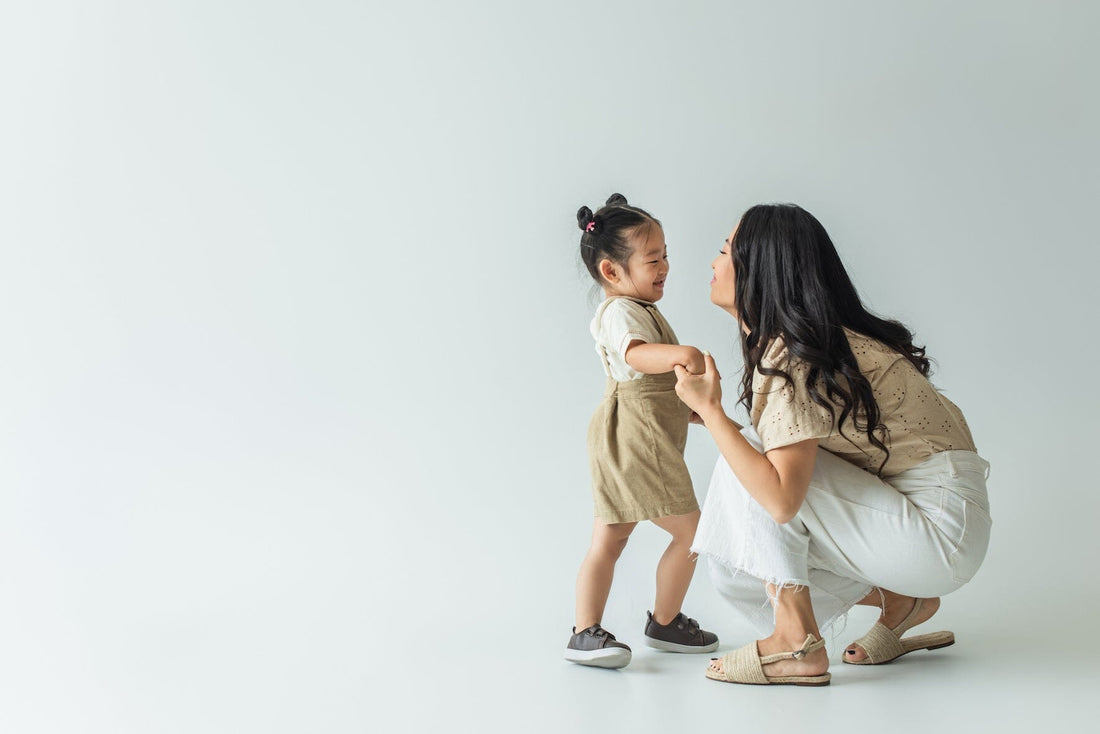Signs of Secure Attachment in Kids
In developmental psychology, attachment theory describes the psychological connectedness between human beings over an extensive period of time. According to British psychologist John Bowlby, who is considered the first attachment theorist, the earliest bonds formed by children with their caregivers have a major impact throughout the children’s lives. Primary caregivers who are available and responsive to their young child’s needs allow the child to develop a sense of security. Attachment theory expanded in the 1970’s and 1980’s to encompass four attachment styles: anxious-avoidant, ambivalent, disorganized, and secure. The healthiest of these attachment styles is secure attachment, while the other three are considered insecure attachments.
What is Secure Attachment in Children?
Secure attachment indicates a special, trusting emotional bond between a child and his or her caregiver. This bond meets a child’s need for security, belonging, and understanding, allowing for suitable development of the nervous system. According to psychotherapists Kent Hoffman, Glen Cooper, and Bert Powell, authors of Raising a Secure Child, secure attachment is crucial to healthy development.1 They explain that two major themes govern parenting for secure attachment: providing comfort when needed and offering the freedom to explore when desired.
Studies show that children who have secure attachments tend to be happier, have more friends, are more trusting of others, and have better relations with parents, siblings, and extended family.2 They perform better academically, are more active, and are poised to create more fulfilling relationships as adults.
How Children Can Form Secure Attachments Early On
Research shows that a secure attachment is formed with a child when the caregiver provides stability and safety in moments of stress, allowing the child to explore their surroundings and responding to the child’s needs for comfort and care.3 Caregivers who are aware of and responsive to subtle cues and behaviors from children are likely to form secure attachments.
Secure attachment can be cultivated very early on. As a baby, your child will start to build this attachment when you respond to their cries and attempt to satisfy their needs, whether it be hunger, a dirty diaper, or boredom. Engaging with your baby by holding, rocking, and soothing them should eventually provoke a response from them. According to the Canadian Pediatric Society, you’ll know your baby is forming a secure attachment if they do the following:4
- By four weeks: Your baby should respond to your smile with movement or a facial expression of their own.
- By three months: Your baby should start smiling back at you.
- By four to six months: Your baby will turn to you and expect a response when they are upset.
- By 7 or 8 months: Your baby may be upset by strangers and potentially start responding to your emotions, including sadness or stress.
Signs of Secure Attachment Style to Look for
Signs of secure attachment style are evident as early as infanthood. Infants who have a secure attachment to their caregivers will seek them out for comfort and be easily soothed by caregivers when upset. This occurs when caregivers are consistent in responding to their child’s needs. When parents or caregivers are inconsistent with their responses, children are susceptible to developing an anxious attachment. When it comes to secure vs. anxious attachment, a child who is anxiously attached may not be as easily soothed by their caregiver and they may appear more distant and confused.
Signs of Secure Attachment Style in Children:
1. Responsiveness & Engaged Interactions
Children with secure attachment will have engaged interactions with their parents and caregivers instead of withdrawing or isolating. In addition to practicing their developing social skills when interacting with others, they will also respond to discipline, trusting that their parents or caregivers are guiding them in the right direction. Responding and engaging is a reciprocal exchange; if parents responded to their child when they expressed their needs, the child will learn how to respond to others.
2. Trust & Comfort in Caregiver's Presence
If the child feels secure that their caregiver will respond to their needs, they will feel trust and comfort in their presence. This is highlighted best when the child expresses distress or discomfort when the caregiver is away, and happiness upon their return. This happiness or composure will appear quickly as soon as they see their caregiver, the person who represents safety to them.
3. Healthy Emotional Expression & Regulation
A secure child will have been reassured and soothed by their parents when in distress. This display of emotional regulation serves as a template, helping the child learn how to manage his or her own emotions over time. When caregivers are sensitive to their children’s feelings, the result is a secure child who believes their emotions are valid and worth expressing and/or discussing. A child with an insecure attachment might choose to bottle up their emotions and keep their feelings to themselves.
4. Seeking Support During Stressful Situations
A secure child does not feel the need to face stressful situations alone because they know they can depend on their parents or caregivers for support. This also means they are less likely to withdraw or avoid challenging experiences because they have a safety net to catch them. Over time the child has learned to trust their parents and can count on their assistance when needed.
5. Positive Exploration & Independence with Secure Base
Because secure children feel safe and protected by their parents or caregivers, they will see them as a secure base from which they can explore the world independently and return for support. In knowing they have a secure base to turn to, the child feels free to try new things, succeed, fail, try again, and persist, developing their sense of self and approaching the world with a learning mindset.
How Parents Can Encourage Secure Attachments in Their Children
From responding to your baby’s cries to playing with your child, here are some ways you can encourage secure attachments in your child:
- Practice nonverbal interactions like reassuring touches, attentive eye contact, and the use of an affectionate, calm tone of speaking
- Respond to your child’s cries and nonverbal cues to comfort their distress
- Practice undistracted presence with your child throughout the day (free from phones, computers, and other screens)
- Ensure your child is getting enough sleep and proper nutrition
- Play and interact with child without overstimulating them
- Reconnect with child after a period of absence
- Reconnect after moments of conflict
- Maintain routines and predictability in your schedules
- Be consistent with discipline
- Prioritize self-care; a parent or caregiver cannot respond as well to their child’s needs if they are neglecting their own
Repairing Secure Attachment
In a study cited by Princeton University, researchers found that 4 in 10 infants lack secure attachments with their caregivers.6 While a number of things can impact this lack of attachment, from early childhood trauma to problems with the child’s nervous system to parental stress, some studies show that mental health issues, attention disorders, and learning differences can also play a role. For instance, research shows a lower incidence of secure attachment in children with ADHD. When a child has ADHD, it can be a challenge for the caregiver to form or maintain a secure attachment with them, especially when the caregiver feels unequipped to support their child appropriately. Getting support for ADHD can help a parent or caregiver feel more empowered to address their child’s unique needs.
Other research suggests that children who have attachment difficulties are more likely to develop anxiety disorders in their lifetime, including social anxiety.7, 8, Often, anxiety co-occurs with ADHD. And parents or caregivers who struggle with mental health issues may also have difficulty forming secure attachments with their children.
While secure attachment forms as early as infanthood, it is never too late to repair attachment. Having realistic expectations and practicing patience with children is a good starting point. Setting boundaries and reconnecting after conflict helps to foster a sense of consistency and safety around the child. Maintaining routines and schedules will also help children feel comforted during times of change.
Seeking Outside Support
Lastly, seeking outside support can be beneficial, especially for children with attention disorders or mental health issues. This may include therapy and counseling or medication. In the case of ADHD or anxiety, many prescribed medications come with undesirable side effects like stomach upset, sleepiness, or appetite changes, however other alternative non-prescription options can also offer relief. One such option is the homeopathic medication Brillia, which is specifically targeted to reduce anxiety, stress, inattention, and irritability while improving focus and clarity. The active ingredient in Brillia consists of antibodies to the S100B protein, which is a key regulator of various different intracellular and extracellular brain processes. Brillia works by attaching to this protein and reducing symptoms of ADHD and anxiety without any harmful side effects.
Unlike prescription medications often prescribed for anxiety or ADHD, Brillia has no contraindications with any other supplements or medications (Rx or non-prescription). It is also safe for children and teens five and older as well as adults. Brillia works best when combined with healthy lifestyle habits outlined in our 5-Pillar approach, which consists of a healthy diet, adequate sleep, controlled screen time, and mindfulness practices. Learn more about how Brillia works and find more resources about connecting with your child at the Brillia(nce) Resource Center.
Get a whole bunch of support right in your inbox.


 Improve focus and clarity.
Improve focus and clarity.


